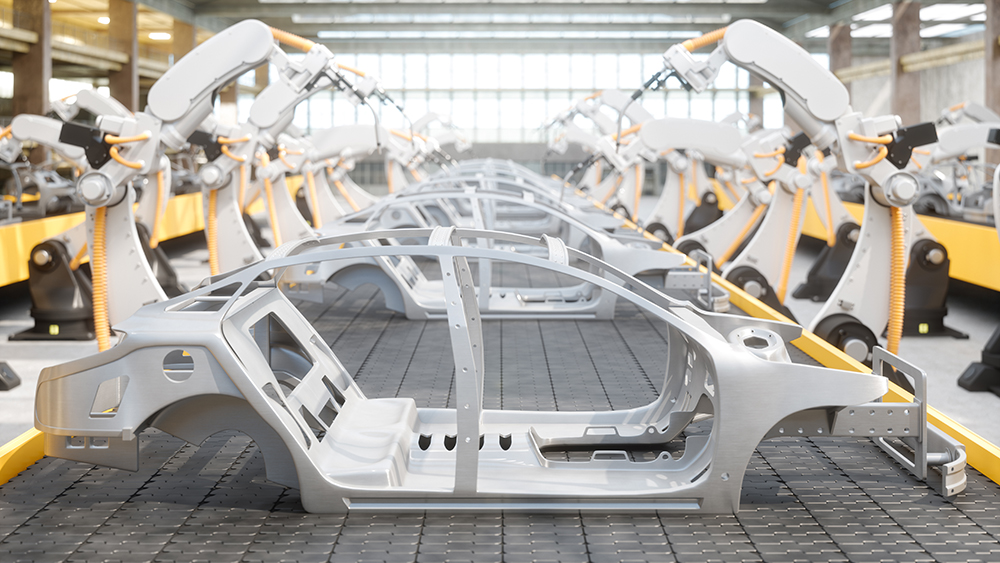
Researchers from the Texas A&M University College of Engineering, the Texas A&M Engineering Experiment Station (TEES) and Los Alamos National Laboratory (LANL) are improving magnesium alloys’ usability, which could mean stronger, lighter vehicles with improved gas efficiency. This collaboration is made possible by the Texas A&M System National Laboratories Office and LANL.
Drs. Ibrahim Karaman, Amine Benzerga and Alan Needleman, doctoral student Wahaz Nasim from TEES; and Dr. Ricardo Lebensohn from LANL are collaborating to improve magnesium alloy manufacturing processes in order to make the alloy easier to use for a variety of applications.
Currently, aluminum alloys are most commonly used in aerospace, defense and automotive components because they are light and easy to manipulate at room temperature. However, magnesium is more than 30% lighter than aluminum. If magnesium alloys could be fabricated and processed more easily and strengthened through processing, then using magnesium alloys in place of aluminum could significantly reduce fuel consumption and carbon footprints and enhance maneuverability in transportation due to the lighter weight and higher specific strength.
Unfortunately, magnesium is difficult to manipulate into different forms at room temperature and it is difficult to process the alloys. Current methods require high temperatures to manipulate magnesium, which raises costs and decreases the overall alloy strength.
Through thermomechanical processing methods, researchers at TEES have the ability to further strengthen magnesium alloys and the potential to increase formability of magnesium alloys at room temperature. According to Karaman, LANL plays an important part in this project because they have one of the best modeling approaches for predicting the behavior of metals. The results of their modeling will inform how TEES researchers process the magnesium alloy in order to determine the appropriate methods for making it easier to work with.
The processing methods these researchers are exploring are based on the idea that one can engineer the anisotropy of magnesium alloys. Anisotropy refers to how substances display variations in physical properties along different material crystal directions and sample axes. A simple visual example would be wood. Wood is easier to split along the grain than across it.
As Benzerga explained, “It is time to engineer that which we cannot suppress. Materials scientists have been trying to suppress or minimize the anisotropy of wrought products, especially in technologically important lightweight applications, such as aluminum alloys and magnesium alloys. Our goal is not to suppress anisotropy but to engineer it so as to actually improve material performance.”
The processing methods involve heating and pressing or extruding the magnesium alloys at different temperatures and pressing/extrusion rates in order to orient the crystal domains in the metal differently. This process forces the grains of the metal to recrystallize in ways that make the alloy easier to manipulate at room temperature.
LANL’s modeling techniques allow the researchers to test a variety of processing steps very quickly in comparison with experimental techniques. Nasim gave the example that over the summer (2020) he was able test over 1,000 methods with the simulations, something that would have taken significantly longer if it needed to be done experimentally. LANL’s modeling techniques are also very accessible to researchers outside of the organization and the open access is a huge asset to the science community.
Another aspect of the project involves developing an index that can be used to determine the level of formability necessary for a project, thereby the optimal processing method for the alloy for that situation.
According to Lebensohn, that’s the most exciting aspect. “The possibility of demonstrating the feasibility of going beyond a trial-and-error Edisonian approach to material design, combining limited experimentation with advanced modeling and inverse optimization to discover novel processing routes to produce material with superior mechanical properties,” he said.
In addition to advances in the field and potential future applications, this collaboration has given Nasim a unique opportunity in his position as a doctoral student. Karaman explained that Nasim plays a fundamental role in this research, both at TEES and at LANL. Nasim shared that he had learned a significant amount about the experimental side of his work at TEES, but he was missing some fundamentals. Working with LANL has allowed him to fill the gaps in his knowledge and open up his future career possibilities to both experimental and computational avenues.
This story originally appeared on the Texas A&M System National Laboratories Office website.